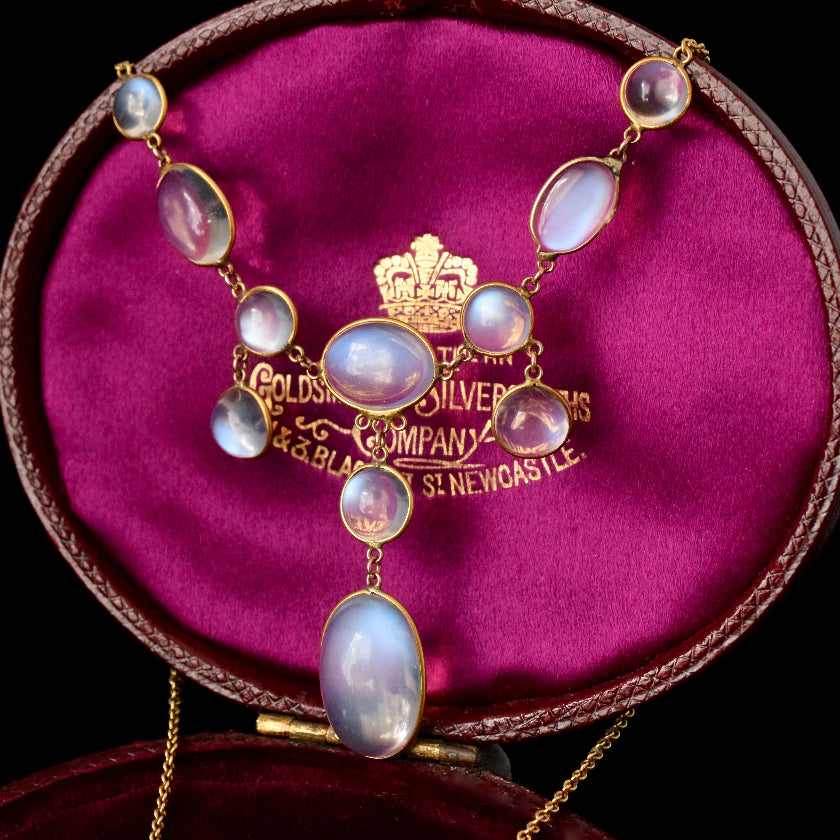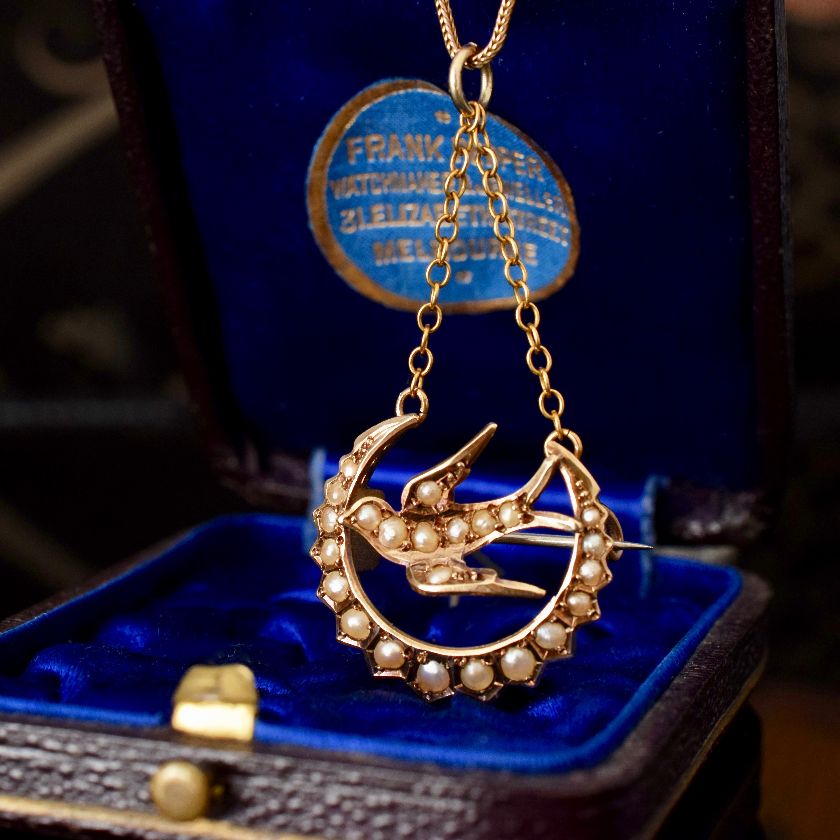Medieval Period: Jewellery Production, Design & Influence 5th - 15th Century
Medieval Materials
Gold was the main material used in jewellery design during the Middle Ages. A number of techniques were used to decorate metal such as enamelling, plating and gilding, soldering, inlay and casting. Gemstones such as freshwater pearls, amber, jet and coral were commonly used. Rubies and Emeralds were often imported from outside of Europe and were highly valuable.
In addition to basic forms of personal jewellery such as rings, necklaces, bracelets, and brooches that remain in use today, medieval jewellery regularly included a variety of other forms less often found in modern jewellery, such as fittings and fasteners for clothes including, buckles, "points" for the end of laces, and buttons. Hat badges, decorations for belts, weapons, purses and other accessories, and decorated pins used to secure hairstyles and head-dresses were also popular choices.
Neck chains carried a variety of pendants from crosses (the most common) to lockets and elaborate pieces with gems. Thin "fillets" or strips of flexible gold sheet, often decorated, were probably mostly sewn into hair or headdresses. In keeping with the ‘functionality’ of jewellery during this period, brooches were extremely popular and highly versatile.
Round fibulae or brooches that closed the neck slit of the undergarment, for example, were continuously used from the Carolingian period onward. In the fourteenth century, cluster brooches and wheel brooches came into fashion.

Lombardic Fibula, mid-6th century (National Museum of Slovenia)
The Lombards (or Langobards, from the Latin Langobardi) are thought to be of Germanic origin, although their background is still contested. They established their kingdom in Italy in 558 by conquering Byzantine land, and were defeated themselves by Charlemagne, king of the Franks, in 774. Over these centuries they assimilated into Roman culture, adopting Catholicism, and left their own administrative legal procedures behind. This piece shows the adoption of the crossbow fibula style, but with a small Lombardic “twist.”
The materials chosen during the Medieval period were carefully selected. Gemstones were selected for their special properties and amuletic value. It was thought that many stones had a particular protective importance, such as the sapphire that was often used in the rings of bishops.
It was widely believed that the sapphire would make its bearer loved by God and man as well as protecting them from injuries, fraud and terror. In addition to the materials themselves, there was great faith in the protective quality of the inscriptions, particularly the religious ones.
The Cross of Mathilde
In terms of architecture, between the 10th and 13th centuries, most European cathedrals were built in the Romanesque style. Cathedrals were the largest buildings in medieval Europe, and they could be found at the centre of towns and cities across the continent.
During the 13th century, church builders began to introduce a new architectural style, known as the Gothic. Gothic structures, such as the Abbey Church of Saint-Denis in France and the rebuilt Canterbury Cathedral in England, have huge stained-glass windows, pointed vaults and arches (a technology developed in the Islamic world), and spires and flying buttresses.

These colourful earrings above which were most likely made as a gift for a Visigothic ruler of medieval Spain, are a fine example of Byzantine jewellery. They date back to the 6th century. The style of these earrings is not too dissimilar to ones that we see every day in the modern world!
References
https://www.thenovium.org/medievaljewellery

